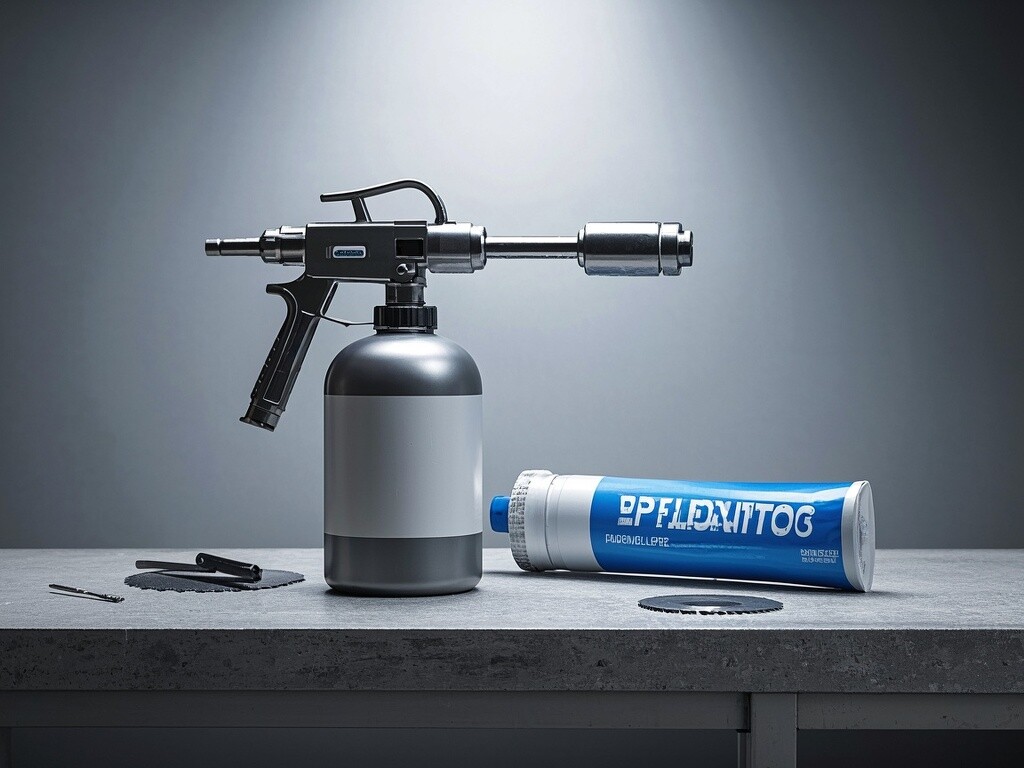
Foam Gun vs. Caulk Gun: Which One Do You Need?
When tackling sealing or insulation projects, selecting the right tool is crucial for efficiency and quality. Foam guns and caulk guns are both indispensable in construction and DIY tasks, but they serve different purposes. This article explores their key differences, applications, and how to choose the best tool for your needs, along with insights into related tools like saw blades and drill bits.
What Is a Foam Gun?
A foam gun is designed to dispense expanding foam sealants, which are commonly used for insulation, filling gaps, and sealing cracks. These guns provide precise control over the foam application, ensuring even distribution and minimizing waste. Foam guns are ideal for large-scale projects, such as insulating walls or sealing around windows and doors. They are compatible with polyurethane foam cans, which expand after application to fill voids effectively.
What Is a Caulk Gun?
A caulk gun, on the other hand, is used to apply caulk or adhesive materials in a controlled manner. Caulk guns are essential for sealing joints, cracks, and seams in materials like wood, metal, or tile. They come in manual and pneumatic variants, with the former being more common for DIY projects. Caulk guns are versatile and can handle various materials, including silicone, latex, and acrylic caulks.
Key Differences Between Foam Guns and Caulk Guns
Applications of Foam Guns
Foam guns are widely used in construction and renovation projects. Their ability to dispense expanding foam makes them perfect for:
- Insulation: Filling wall cavities and attic spaces to improve energy efficiency.
- Gap Sealing: Closing gaps around windows, doors, and pipes to prevent air and water leaks.
- Soundproofing: Reducing noise transmission by filling voids in walls and floors.
Applications of Caulk Guns
Caulk guns are versatile tools suitable for a variety of sealing tasks, including:
- Bathroom and Kitchen Sealing: Waterproofing joints around sinks, tubs, and countertops.
- Window and Door Installation: Sealing edges to prevent drafts and moisture ingress.
- Trim Work: Applying adhesive for baseboards, crown molding, and other decorative elements.
Choosing the Right Tool for Your Project
Selecting between a foam gun and a caulk gun depends on your project's specific needs. Consider the following factors:
- Material Type: Use a foam gun for expanding foam and a caulk gun for adhesives or sealants.
- Project Scale: Foam guns are better for large insulation jobs, while caulk guns excel in detailed sealing work.
- Precision Requirements: Caulk guns offer finer control for smooth finishes, whereas foam guns are ideal for filling large gaps.
Complementary Tools: Saw Blades and Drill Bits
In many projects, foam guns and caulk guns are used alongside other tools like saw blades and drill bits. For instance:
- Saw Blades: Essential for cutting materials to size before sealing or insulating. Choose the right blade for wood, metal, or plastic.
- Drill Bits: Used for creating holes or securing fixtures, ensuring a solid foundation for sealing or insulation work.
Common Misconceptions About Foam and Caulk Guns
Many users mistakenly believe these tools are interchangeable. However, using a foam gun for caulk or vice versa can lead to poor results and wasted materials. Always match the tool to the material and task at hand.
Why Choose the Right Tool Matters
Investing in the correct tool not only ensures quality results but also saves time and reduces material waste. Whether you're a DIY enthusiast or a professional contractor, understanding the differences between foam guns and caulk guns will help you achieve better outcomes.
FAQ
Q: Can I use a caulk gun for expanding foam?
A: No, caulk guns are not designed to handle the pressure and viscosity of expanding foam. Always use a foam gun for such applications.
Q: What type of caulk gun is best for beginners?
A: A manual caulk gun with a smooth rod mechanism is ideal for beginners, as it offers good control and is easy to use.
Q: How do I clean a foam gun after use?
A: Use a foam gun cleaner or acetone to flush out residual foam before it hardens. Follow the manufacturer's instructions for best results.
Conclusion
Both foam guns and caulk guns are vital for sealing and insulation projects, but they serve distinct roles. By understanding their differences and applications, you can select the right tool for your needs. Don't forget to pair them with complementary tools like saw blades and drill bits for a complete solution. For expert advice or high-quality tools, contact us today!
Related Posts
- ▶ Dripless Dual-Cartridge Caulking Gun: Innovation for Multi-Material Applications
- ▶ Caulking Gun Size Guide: Matching Chaohui Tools to Your Project Needs
- ▶ Eco-Friendly Foam Gun: Durability Meets Sustainability for Long-Term Use
- ▶ Foam Gun: Precision Control & Waste Reduction for Professional Sealing
- ▶ Best Foam Gun for Professionals: Top 5 Picks in 2024
- ▶ How to Choose the Right Saw Blade for Your Project?
Send Us A Message
